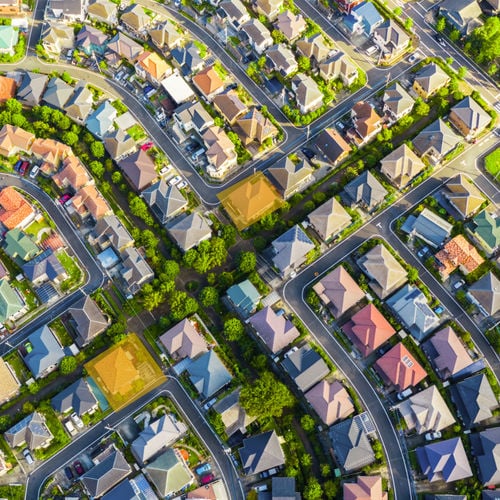Walkability has become a significant factor in determining home values, especially in dense and competitive housing markets like the Bay Area. The region’s homebuyers increasingly consider Walk Score—a numerical ranking of how pedestrian-friendly an area is—when evaluating properties. Whether a buyer is looking for a bustling urban environment or a quieter suburban experience, Walk Score plays a role in pricing homes, particularly in urban and high-demand markets.
This article will explore the importance of Walk Score and walkability in the Bay Area, how they affect home prices, and which types of buyers are most sensitive to these factors.
What is Walk Score?
Walk Score is a metric that rates how walkable a location is on a scale from 0 to 100. It takes into account how easy it is to run errands on foot by analyzing the distance from a home to nearby amenities such as grocery stores, schools, restaurants, parks, and public transportation. A higher Walk Score indicates that most daily activities can be done without a car, while a lower score suggests that driving is necessary.
- 90-100: Walker’s Paradise – Daily errands do not require a car.
- 70-89: Very Walkable – Most errands can be accomplished on foot.
- 50-69: Somewhat Walkable – Some errands can be accomplished on foot, but others will require a car.
- 25-49: Car-Dependent – Most errands require a car.
- 0-24: Car-Dependent – Almost all errands require a car.
In the Bay Area, where many residents face long commutes and high housing prices, the convenience of living in a walkable neighborhood has gained importance, with certain areas commanding premium prices due to their high Walk Scores.
Do Buyers Really Look at Walk Score?
Yes, many buyers, especially in urban and semi-urban areas, pay close attention to Walk Score. According to Redfin, homebuyers in cities are increasingly prioritizing walkability. A study by Redfin showed that one point increase in Walk Score can boost a home’s price by 0.9% in urban areas.
This is particularly true in the Bay Area, where people are willing to pay a premium for properties close to amenities that reduce their reliance on cars. Buyers are looking for convenient access to schools, shops, parks, and public transit. For some, a high Walk Score can make the difference between purchasing a home and continuing the search.
What Walk Score is Considered Good or Bad?
- Good Walk Score: Homes with Walk Scores of 70 and above are considered very walkable, making them highly desirable, particularly for buyers who value easy access to amenities and public transportation. In urban Bay Area cities like San Francisco, Oakland, and Berkeley, homes with scores in this range often attract younger professionals, families, and retirees who prefer walking to driving.
- Bad Walk Score: A Walk Score below 50 is generally considered low, indicating that most errands require a car. These scores are more typical of suburban or rural areas where walking isn’t a practical option. In the Bay Area, this might be seen in parts of Silicon Valley, Dublin, or Livermore, where homes are more car-dependent.
However, a “bad” Walk Score doesn’t necessarily mean that a property isn’t valuable. Some buyers, especially those purchasing larger, more suburban homes, might prioritize space, schools, and quieter surroundings over proximity to shops or public transport.
Who Cares About Walkability?
Different buyer demographics place varying levels of importance on walkability and Walk Score. Here’s a breakdown of the types of buyers for whom Walk Score is crucial versus those who might not prioritize it:
Buyers Who Value Walkability:
- Young Professionals: Many young professionals working in tech, finance, or other industries in cities like San Francisco or Oakland highly value walkability. These buyers typically prefer living close to restaurants, bars, and entertainment venues, often trading square footage or suburban quiet for the convenience of city living. Public transportation access also matters, as it reduces their commute time.
- Families with Children: Families often seek out walkable neighborhoods with good schools, parks, and daycare facilities nearby. In the Bay Area, neighborhoods like Palo Alto or Burlingame offer strong walkability with access to family-friendly amenities, which makes these areas highly competitive.
- Retirees: Older buyers and retirees may prefer living in walkable areas where they can easily access healthcare facilities, grocery stores, and recreational areas without needing a car. Walkable suburbs like Los Gatos or Mill Valley are popular with this demographic.
- Eco-Conscious Buyers: With growing awareness of environmental issues, some buyers prioritize reducing their carbon footprint. These buyers are drawn to areas where they can walk or bike to work, stores, or public transport.
Buyers for Whom Walkability is Less Important
- Suburban or Rural Buyers: Buyers looking for homes on larger lots, often in the suburbs or rural areas like Saratoga or Woodside, typically place less importance on Walk Score. For them, privacy, space, and distance from urban congestion are more appealing.
- Luxury Home Buyers: In some cases, high-end luxury buyers, especially those looking at larger estates, may prioritize the property’s size, views, or amenities over walkability. For example, a luxury home in Hillsborough with a low Walk Score may still command a high price due to its prestige, land size, and privacy.
- Families Seeking Space: For families looking for a spacious home with a large yard in areas like Pleasanton or Danville, proximity to amenities may be less of a priority than good schools and a quiet, safe neighborhood. These buyers are often more car-dependent and aren’t as focused on Walk Score.
Does the Type of Property Matter?
Yes, the impact of Walk Score on a home’s price can depend on the type of property.
- Condos and Townhomes: Walkability is often more important for condos and townhomes, particularly in urban areas. Buyers of these properties are generally looking for low-maintenance living and want to be near amenities like coffee shops, grocery stores, and public transit. A condo in Downtown San Francisco with a high Walk Score can command significantly higher prices than a similar property in a less walkable part of the city.
- Single-Family Homes: While single-family homes with high Walk Scores do fetch higher prices, the impact is less pronounced compared to condos. For single-family homes, especially those in suburban areas, other factors such as lot size, school district, and privacy often matter more than walkability. However, in certain walkable neighborhoods like Willow Glen or Almond Grove, single-family homes can see a significant premium due to their proximity to amenities.
- Large Lot Properties: For homes on larger lots, such as those in South San Jose or Morgan Hill, walkability is often not a priority. These buyers may value privacy and space over access to local amenities, making the Walk Score less relevant.
How Walk Score Impacts Home Prices in the Bay Area
The Bay Area is known for its mix of urban and suburban environments, and walkability often directly correlates with home value in more urban settings. Buyers are willing to pay a premium for the convenience of a high Walk Score, particularly in cities where daily errands, dining, and entertainment are all within walking distance.
- In dense cities like San Francisco, a one-point increase in Walk Score can raise a home’s value by up to 1%. Homes in walkable neighborhoods like Mission District or North Beach are highly sought after and often receive multiple offers above asking price.
- In Oakland and Berkeley, where walkability is also a top priority for buyers, homes in neighborhoods like Rockridge or Elmwood with high Walk Scores tend to sell faster and at higher prices than those in more car-dependent areas.
On the other hand, in suburban areas like Palo Alto or Los Altos, walkability is less of a factor, though it can still play a role in increasing the desirability of certain neighborhoods close to downtown areas.
Conclusion: Walkability Matters, But It’s Not Everything
For many Bay Area buyers, Walk Score and walkability are important considerations that can significantly affect home prices. Urban buyers, young professionals, retirees, and eco-conscious individuals are particularly sensitive to walkability, while suburban and luxury buyers may place less emphasis on this factor.
That said, Walk Score is just one piece of the puzzle. Other factors, such as schools, lot size, condition, and property type, also play a major role in determining home value. Understanding how Walk Score impacts different types of properties and buyers will help you better gauge how much walkability matters when pricing your home for sale in the Bay Area.
Fantastic Willow Glen Homes for Sale
2
3
4
5
6
7
8
9
10
11
12
13
14
15
16
17
18
19
20
21
22
23
24
25




